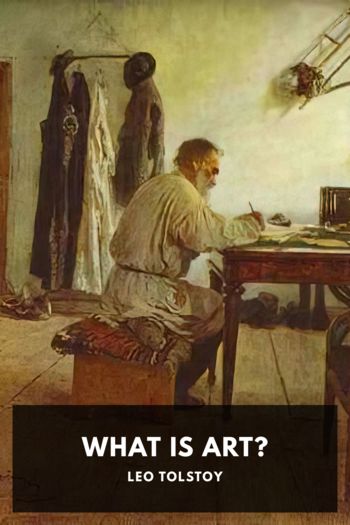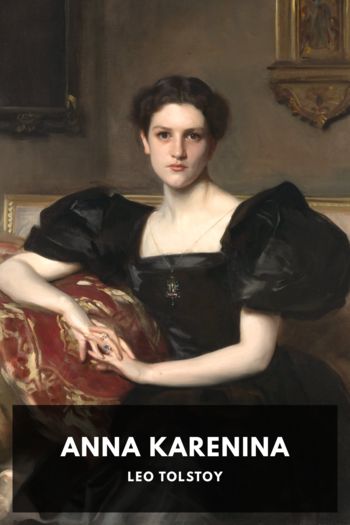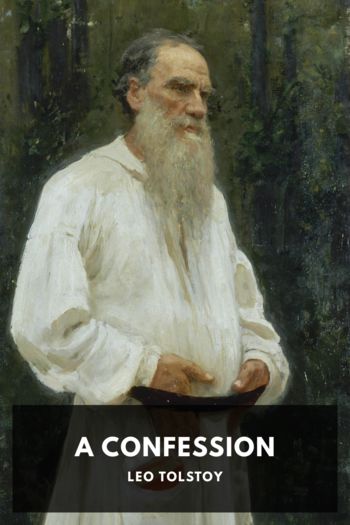What Is Art? by Leo Tolstoy (english readers .txt) 📕

- Author: Leo Tolstoy
Book online «What Is Art? by Leo Tolstoy (english readers .txt) 📕». Author Leo Tolstoy
To produce such counterfeits, definite rules or recipes exist in each branch of art. So that the talented man, having assimilated them, may produce such works à froid, cold drawn, without any feeling.
In order to write poems a man of literary talent needs only these qualifications: to acquire the knack, conformably with the requirements of rhyme and rhythm, of using, instead of the one really suitable word, ten others meaning approximately the same; to learn how to take any phrase which, to be clear, has but one natural order of words, and despite all possible dislocations still to retain some sense in it; and lastly, to be able, guided by the words required for the rhymes, to devise some semblance of thoughts, feelings, or descriptions to suit these words. Having acquired these qualifications, he may unceasingly produce poems—short or long, religious, amatory or patriotic, according to the demand.
If a man of literary talent wishes to write a story or novel, he need only form his style—i.e. learn how to describe all that he sees—and accustom himself to remember or note down details. When he has accustomed himself to this, he can, according to his inclination or the demand, unceasingly produce novels or stories—historical, naturalistic, social, erotic, psychological, or even religious, for which latter kind a demand and fashion begins to show itself. He can take subjects from books or from the events of life, and can copy the characters of the people in his book from his acquaintances.
And such novels and stories, if only they are decked out with well observed and carefully noted details, preferably erotic ones, will be considered works of art, even though they may not contain a spark of feeling experienced.
To produce art in dramatic form, a talented man, in addition to all that is required for novels and stories, must also learn to furnish his characters with as many smart and witty sentences as possible, must know how to utilise theatrical effects, and how to entwine the action of his characters so that there should not be any long conversations, but as much bustle and movement on the stage as possible. If the writer is able to do this, he may produce dramatic works one after another without stopping, selecting his subjects from the reports of the law courts, or from the latest society topic, such as hypnotism, heredity, etc., or from deep antiquity, or even from the realms of fancy.
In the sphere of painting and sculpture it is still easier for the talented man to produce imitations of art. He need only learn to draw, paint, and model—especially naked bodies. Thus equipped he can continue to paint pictures, or model statues, one after another, choosing subjects according to his bent—mythological, or religious, or fantastic, or symbolical; or he may depict what is written about in the papers—a coronation, a strike, the Turko-Grecian war, famine scenes; or, commonest of all, he may just copy anything he thinks beautiful—from naked women to copper basins.
For the production of musical art the talented man needs still less of what constitutes the essence of art, i.e. feeling wherewith to infect others; but, on the other hand, he requires more physical, gymnastic labour than for any other art, unless it be dancing. To produce works of musical art, he must first learn to move his fingers on some instrument as rapidly as those who have reached the highest perfection; next he must know how in former times polyphonic music was written, must study what are called counterpoint and fugue; and furthermore, he must learn orchestration, i.e. how to utilise the effects of the instruments. But once he has learned all this, the composer may unceasingly produce one work after another; whether programme-music, opera, or song (devising sounds more or less corresponding to the words), or chamber music, i.e. he may take another man’s themes and work them up into definite forms by means of counterpoint and fugue; or, what is commonest of all, he may compose fantastic music, i.e. he may take a conjunction of sounds which happens to come to hand, and pile every sort of complication and ornamentation on to this chance combination.
Thus, in all realms of art, counterfeits of art are manufactured to a ready-made, prearranged recipe, and these counterfeits the public of our upper classes accept for real art.
And this substitution of counterfeits for real works of art was the third and most important consequence of the separation of the art of the upper classes from universal art.
XIIIn our society three conditions cooperate to cause the production of objects of counterfeit art. They are—(1) the considerable remuneration of artists for their productions and the professionalisation of artists which this has produced, (2) art criticism, and (3) schools of art.
While art was as yet undivided, and only religious art was valued and rewarded while indiscriminate art was left unrewarded, there were no counterfeits of art, or, if any existed, being exposed to the criticism of the whole people, they quickly disappeared. But as soon as that division occurred, and the upper classes acclaimed every kind of art as good if only it afforded them pleasure, and began to reward such art more highly than any other social activity, immediately a large number of people devoted themselves to this activity, and art assumed quite a different character and became a profession.
And as soon as this occurred, the chief and most precious quality of art—its sincerity—was at once greatly weakened and eventually quite destroyed.
The professional artist lives by his art, and has continually to invent subjects for his works, and does invent them. And it is obvious how great a difference must exist between works of art produced on the one hand by men such as the Jewish prophets, the authors of the Psalms, Francis of Assisi, the authors of the Iliad and Odyssey, of folk-stories, legends, and folk-songs, many of whom not only





Comments (0)